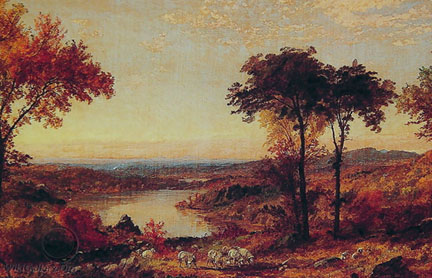On the Pennsylvania Frontier
The Wyoming Valley surrounds a stretch of the Susquehanna River just as it bends gently from east to west in the northeast corner of Pennsylvania. Within this valley on 3 July 1778, a battle took place between Americans and a combined force of British, Loyalists, and their Indian allies.
The Wyoming Valley Battle - or Massacre, depending on who is telling the story - has inspired ballads and poems, been included in family histories and recollections, appeared in histories of the American Revolution, Pennsylvania, and the Wyoming Valley region, served as the focal point of community celebrations, and been the subject of etchings and paintings. Each version of the event emphasizes different details, and changes, adds, or omits others. Some of the accounts perpetuated misconceptions and misrepresentations about the event until the original identity and purpose have nearly disappeared, leaving something less like history and more like legend behind. Earlier historians romanticized or memorialized the battle, while later scholars tried to discern what really happened and why.
Rather than attempt to discover the true image of the battle, this project explores two commemoration ceremonies of the event. The motives, perspectives, and memories of the creators of each ceremony, whether intentionally or not, altered the battle’s historical record, and reflected the social, political, and economic environments of their day. The ceremonies also reveal the evolution of Indian/white relations, changing gender roles, and white perceptions of the “others” within the community. It also reflects the influence of popular culture and its role in the creation of a collective memory and regional historical identity.
